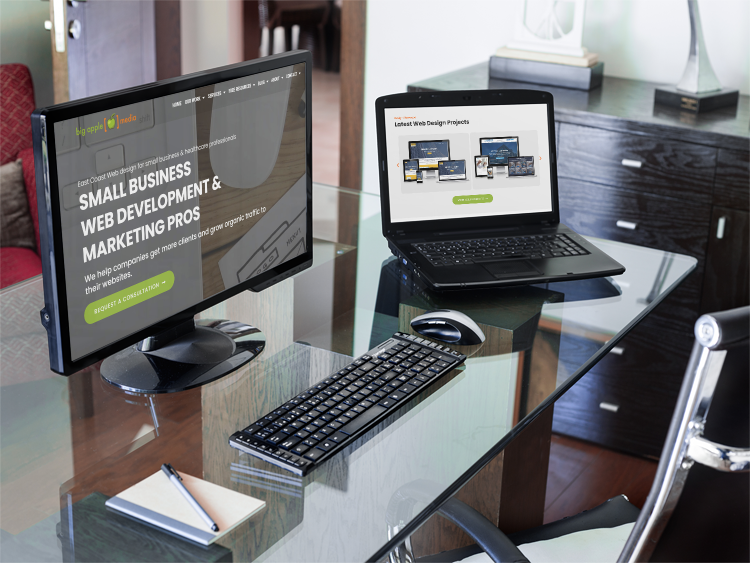Why Holistic Website Design Is the Secret to a Smooth Customer Experience
In today's electronic landscape, the relevance of holistic internet design can not be overemphasized, as it intricately weaves together aesthetic appeals, usability, and performance to create a seamless user experience. By embracing a comprehensive technique that prioritizes customer demands and leverages responses, designers can improve the general communication with their platforms.
Recognizing Holistic Internet Layout

Including customer comments and behavioral data is vital in holistic website design. This iterative process assists designers to identify discomfort factors and areas for enhancement, making sure that the end product reverberates with individuals. Furthermore, alternative design emphasizes the relevance of availability, guaranteeing that all users, no matter of their capacities, can navigate and connect with the web site efficiently.
Furthermore, the integration of responsive style concepts is vital in accommodating numerous devices and display sizes, additionally enhancing the individual experience. By recognizing the interconnectedness of these elements, developers can develop web sites that not just attract but also maintain users, eventually driving involvement and conversions. All natural website design is, consequently, a calculated strategy that promotes a significant relationship in between individuals and digital rooms, leading the way for lasting on the internet success.
Key Components of Holistic Layout

One more critical aspect is consistency in visual and functional elements across the internet site. This includes maintaining a cohesive color palette, typography, and format, which assists customers browse the website with ease - happy web design. In addition, responsive layout is necessary, making sure that the website carries out efficiently throughout various tools and screen dimensions
Availability is also an essential component of all natural design. By sticking to accessibility criteria, designers can produce comprehensive experiences that accommodate varied user groups, consisting of those with disabilities. The assimilation of material approach guarantees that useful details is provided plainly and succinctly, boosting understanding and engagement.
Finally, efficient partnership amongst style, development, and marketing groups promotes a unified vision that straightens with service goals. By concentrating on these crucial elements, holistic web design can provide an enriching customer experience that is both engaging and functional.
Benefits of a Smooth Experience
Developing a seamless user experience provides many benefits that significantly enhance overall fulfillment and interaction. At its core, a smooth experience fosters a sense of ease and intuitiveness, allowing users to browse an internet site or application effortlessly. This reduction in friction not just boosts click this the chance of customers returning but also boosts their readiness to advise the system to others.
Furthermore, a smooth experience causes enhanced conversion rates. When customers locate what they need with very little initiative, they are a lot more inclined to finish preferred actions, such as buying or registering for a newsletter. This performance equates into greater client retention, as pleased users are more most likely to end up being loyal supporters for the brand.
Additionally, a natural and seamless user interface lessens cognitive load, enabling users to concentrate on content instead than battling with navigation or design incongruities. This clearness not only improves user contentment but additionally strengthens brand name reputation. Eventually, focusing on a smooth individual experience causes a competitive benefit, as organizations that spend in this element are better placed to meet the advancing expectations of their target market and drive lasting success.
Executing Alternative Strategies
To accomplish an absolutely smooth customer experience, organizations must take on alternative techniques that think about every element of layout and capability. This strategy begins with a combined vision that straightens employee throughout different disciplines, including UX/UI style, web content development, and technological execution. Effective collaboration promotes a common understanding of customer demands and purposes, allowing for more meaningful layout selections.
Following, it is crucial to produce individual characters and trip maps that mirror the varied demographics and actions of the target market. By feeling sorry for customers' viewpoints, companies can prepare for challenges and streamline interactions throughout the digital experience.

In addition, regular branding and messaging need to permeate every touchpoint, Recommended Site making sure an identifiable and credible existence that enhances user engagement. Incorporating responsive style principles is also crucial, as customers currently connect with web content throughout several devices.
Furthermore, companies must focus on ease of access, guaranteeing that all customers, no matter of capability, can browse and take advantage of their electronic offerings. By installing these holistic strategies right into the style process, companies can develop a cohesive and enjoyable customer experience that promotes fulfillment and loyalty.
Gauging Individual Experience Success
While achieving an all natural method to navigate to this website website design is crucial, determining user experience success is just as essential to make sure that layout techniques successfully satisfy individual demands. This needs a combination of qualitative and measurable metrics to acquire a thorough understanding of individual interactions and satisfaction degrees.
Key performance indications (KPIs) such as user engagement, conversion prices, and bounce rates offer useful measurable insights. For instance, a high conversion rate may show that customers discover the layout intuitive and engaging. Conversely, raised bounce rates can signal that individuals are disappointed or baffled, demanding a reevaluation of the design components.
Qualitative steps, including individual responses, surveys, and usability testing, are critical for getting much deeper understandings right into the user experience. Evaluating individual remarks can disclose discomfort factors and areas for improvement, while usability tests enable designers to observe real-time communications and determine barriers users deal with.
Inevitably, the assimilation of these dimension strategies permits continuous improvement of internet layout, guaranteeing it continues to be user-centered and reliable in supplying a seamless experience (happy web design). Consistently taking another look at these metrics will certainly make it possible for developers to adjust to advancing user demands and preferences, solidifying the total success of an alternative web style strategy
Final Thought
In verdict, alternative web style emerges as an essential method to achieving a seamless user experience. By integrating visual appeals, capability, and use, this design philosophy addresses varied user needs and choices.